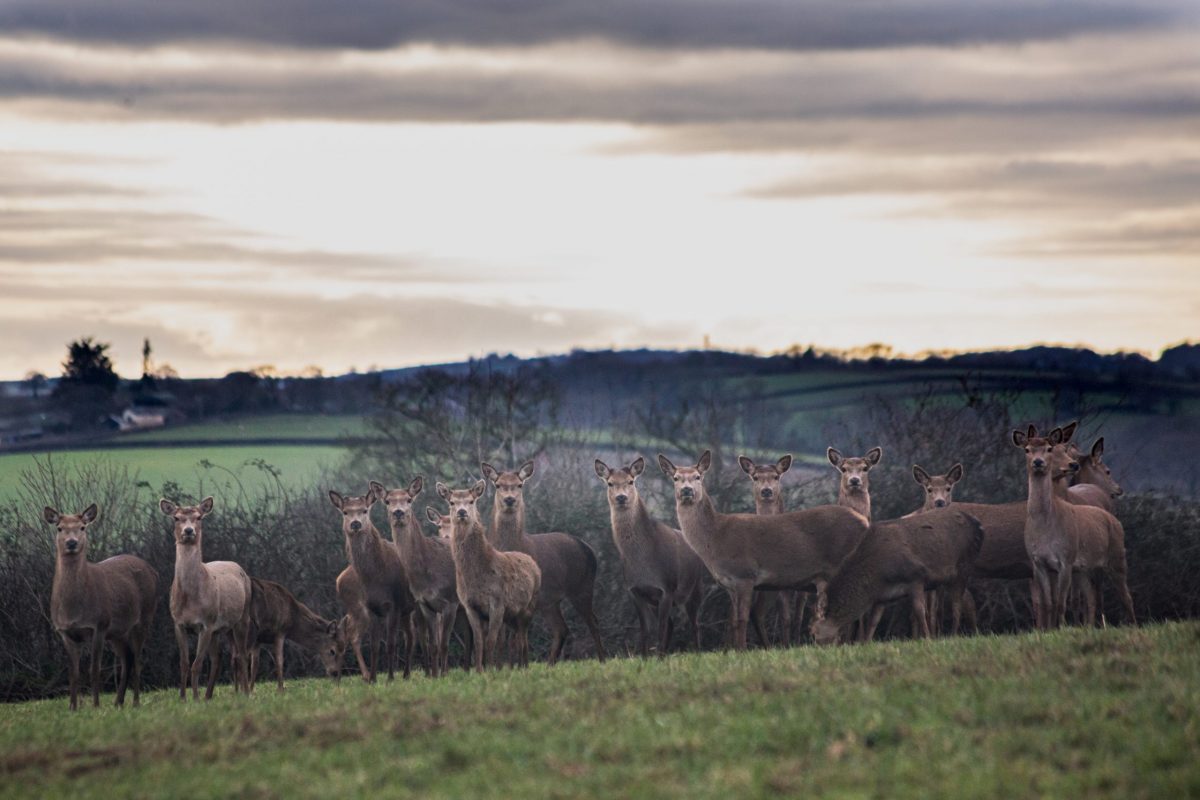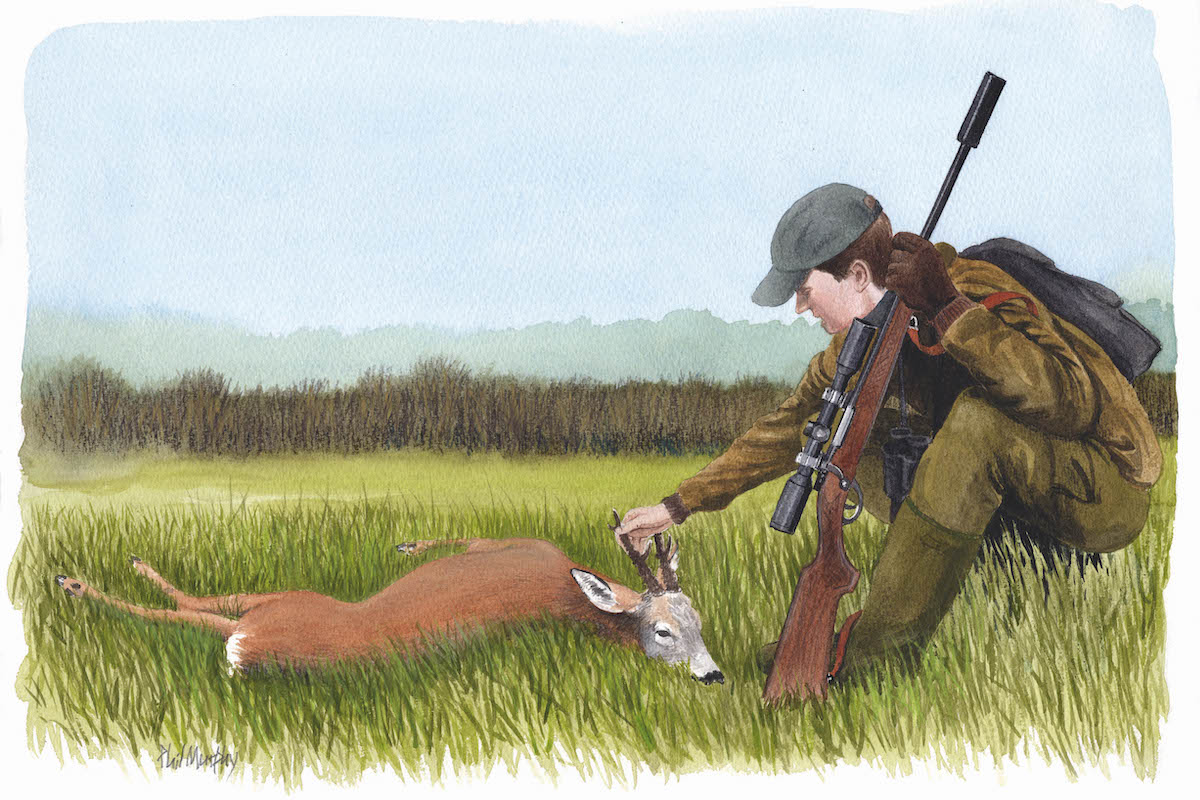Muntjac and the ongoing mission to control its spread
The invasive muntjac is continuing its spread throughout the UK, and Will Martin is looking forward to its first entry in his gamebook

If you mention the word muntjac after a couple of jars in any local Devon pub, everyone, it will seem, has a story of a sighting. The muntjac that escaped just outside of Exeter, the muntjac hit on the link road, the cousin who saw a muntjac kicked up by a pack of beagles. While muntjac in Devon may be considered on par with the Exmoor Beast in local tales, muntjac are not new to the UK.
The genus Muntiacus has 12 recognized species. Reeves’ or Chinese muntjac originating in south-east China were first captured and released into Woburn Park by the 11th Duke of Bedford in the early 1900s. The Duke, while serving as the president of the Zoological Society of London, was a notorious spreader of invasive species.
He famously gave the New Zealand government five Himalayan tahr in 1903 — the government has since spent the past 120 years trying to remove the estimated 25,000 tahrs that call New Zealand home today. The Duke’s next great release was the grey squirrel. Not only did he fondly care for his own population at Woburn, but such was his generosity that he released populations in Regent’s Park and across the country. The readers of Shooting Times, I understand, have spent the past 100 years trying to eradicate these.
The muntjac, though, formed one of the 42 species of deer that resided at Woburn during the early 1900s. Between 1894 and 1905, 24 of these stocky deer were turned out to the woods around Woburn. The initial small population was added to by a further escape in the 1920s from Whipsnade Zoo, also in Bedfordshire.

Muntjac were released into Woburn Park in the early 1900s by the 11th Duke of Bedford
Population expansion
Interestingly, the population didn’t suddenly explode. Charles Smith-Jones, technical adviser to the British Deer Society (BDS) and author of Muntjac: Managing an Alien Species, reports that it wasn’t until the 1970s that the muntjac numbers started going up. Exactly what flicked the switch that took the muntjac from a novelty sighting in a deer park to a population explosion is unknown, but it is likely that something in the Reeves’ muntjac changed to allow the British countryside to become its home.
With their ability to breed all year, there were soon muntjac pushing muntjac into new territory and the great expansion began. The 2016 BDS deer survey shows clearly the enormous extent that these small deer have expanded their territory.

Although muntjac are spreading across the south, the only species Will Martin and Andy Gray spot is a less elusive herd of red hinds
For me, my hunt for a Devon muntjac started where I see more deer than anywhere else in this great county — MC Kelly’s larder. MC Kelly is a butcher based in Copplestone and importantly is also a significant — if not the most significant — player in the West Country’s venison market. Every day stalkers arrive to drop off their deer, and the MC Kelly team skin, butcher and package them before feeding the pubs, restaurants and hotels as far afield as London. If there were a muntjac to be found, this would be a good place to start.
Immediately, I was disappointed. A quick conversation with Craig, the head of the venison larder, identified that he had only seen half a dozen muntjac in the past 10 years and commented that they were as difficult to skin as a squirrel. When I thought about it though, this made sense. A muntjac weighs around 12kg and from my experience is the most delicious of our deer species, so why would you sell the carcass? As to why they are as hard to skin as a squirrel, apparently it is because they are very large in the front shoulder.
Long shot
Clearly seeing my disappointment on his arrival to the larder, MC Kelly’s director Andy Gray swung his rifle over his shoulder and said: “Get in — if we can’t find one here, we will find one on the farm!”
Admittedly it was a long shot, but as I leafed through my muntjac notes a report of a toothed deer leapt out at me in an article from the Crediton Courier, a sighting a mere three miles down the road. This glimmer of hope was quickly shot down by Andy, who proudly stated that he had seen that very muntjac not once but twice. Firstly when it was in a pen at the local animal park, and secondly in the keeper of a local shoot’s freezer.
Anyway, a wild goose chase is at least a chase. We unloaded and slid into a cover of wild bird mix, heading along the hedgerow to get into a position where we could glass the densely covered quarry. Muntjac love cover. Charles holds their love of cover responsible for stopping the muntjac’s total domination of mainland Britain. The data supports this, with the 2016 survey showing no muntjac passing the Derbyshire Peaks, the Yorkshire Dales, the Welsh mountains or the Devon moors.
Timid animals thrive in deep woodland and bramble cover, where they are almost impossible to see, only emerging, if at all, under the cover of darkness. Even in darkness, the vast expanses of our hill country would stop a muntjac in its tracks.
Of course, not all muntjac movements are likely due to their own doing. According to my sources, they are rather easy to transport and, as was pointed out to me, “they didn’t get to Northern Ireland across the Irish Sea by themselves”. This modern-day Victorianism through illegal muntjac releasing is widely seen as another reason for their
1970s boom and their continuing expansion westwards.
Heat signature
Back to my hunt, however, and we sidled up to the quarry, thermal in hand. I know it’s not very traditional walking around with a £4,000 tube resembling a child’s kaleidoscope, but this was our best shot at witnessing a muntjac through the dense cover. Then, beyond my wildest dreams, a heat signature showed. Too big to be a rabbit, too small for a roe, but unfortunately it was also too long in the ear to be a muntjac — it was, of course, a hare. And after a couple of minutes the hare lolloped in its rather ungainly way out of the cover and within 30 yards of where Andy and I sat hidden in the hedge.
The brown hare, interestingly, is also an introduced species. The Romans are considered to be the introducers sometime around 10AD. Unlike the muntjac, though, the brown hare is considered naturalised and protected under the Wildlife and Countryside Act 1981. No such protection is afforded to the muntjac, which are identified under the rather differently worded Invasive Alien Species Order 2019.

Will and Andy set up by the side of a hedge, thermal in hand
Whereas the softly worded Wildlife and Countryside Act protects animals, as an “invasive alien” it is an offence to breed muntjac in captivity or release them into the wild. However, as uncovered while writing this article it has become obvious that at least in part the muntjac’s migration has been powered by cars and road.
Clearly, though, not Andy’s road, as having sat in the hedge for over three hours and seen nothing, the sun was beginning to sink low. While it was a glorious trip, it became clear that we may well have been looking for the Loch Ness monster.
As we were trudging back, Andy received a phone call from a keeper over in Tiverton. Among other deer-related conversation, suddenly Andy stopped. “Really!” he exclaimed. It turns out that in Tiverton, not 13 miles away, the keeper had seen three muntjac the night before.
Just my luck. To add insult to injury, my post on the Facebook group Devon & Cornwall Deer Management had started throwing up the usual tall tales. Notably, somebody had seen one run across my parents’ garden a week prior. Although, interestingly, I did finally see hard evidence of muntjac shot in North Devon.
What is clear is that muntjac are in parts of Devon. What is unclear, though, is how well they will fall into the habitat, whether their populations will explode, the possible damage they will cause and whether they are moving here themselves from the eastern reaches of Devon or hitchhiking from further afield.
Fifty years ago, when the residents of Bedfordshire started seeing muntjac when walking their dogs, I question whether they would have anticipated that they would now be shooing them out of their gardens. From a Devonian perspective I’m sort of looking forward to their first entry into my gamebook and wonder just how long it is going to take.








